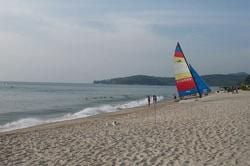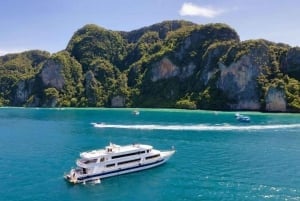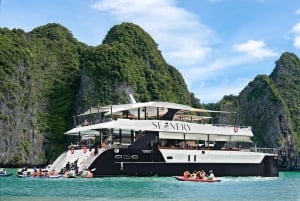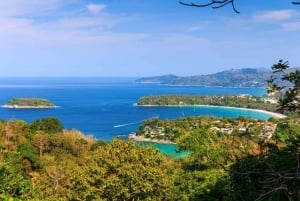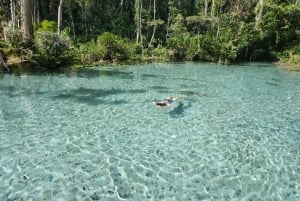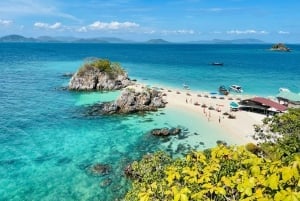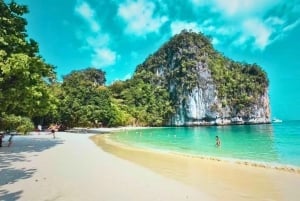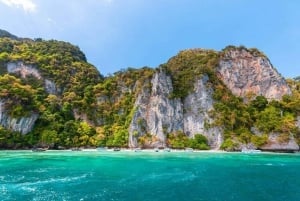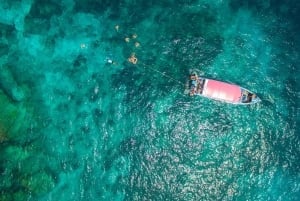Phuket beaches
Phuket's main beaches
The island's northernmost and most recently ''opened'' beach destination is Mai Khao, which at 11km is the longest beach on the island. As it's located in Sirinath Marine National Park, development remains low key. The beach is ideal for beachcombers and ironically, plane spotters, as it stretches from the end of the runway of Phuket International Airport.
To the south of the airport, the casuarina-fringed beach of Nai Yang is popular with tourists and locals alike; there's loads of shade courtesy of the trees, providing cool areas for picnics, complete with a selection of local food vendors supply snacks to those who didn't pack their own lunchboxes.
A little known beach south of Nai Yang, Naithon Beach is a long and wide sandy strip that is divided in two by a small rock formation. It is well-shaded by tall trees. There are several small restaurants, beach loungers and umbrellas for sunbathing and relaxing.
The relatively deserted Layan Beach sits at the northern end of Bang Tao Bay. While Layan is relatively deserted, Bang Tao Beach itself couldn't be more different. This once-active major tin mining lagoon has been converted into one of the top destination resorts on the island.
Surin Beach remains a favourite with locals and visitors. To the north are a number of the top of the range accommodations on the island, including the exclusive Amanpuri and Surin (formerly The Chedi) resorts, while behind the beach in the hills, multi-million dollar villa complexes look out over the ocean.
Following the hilly coastline south is Kamala Beach, where variety starts to step up a notch. Although badly damaged in the 2004 tsunami, things are back to normal and you'll find all manner of tourist amenities along the beachfront. During the daytime the area is relatively quiet, but during the cooler evening hours, the narrow streets become a hive of activity as the restaurants and bars start to fill up. There's a good selection of moderately priced accommodation around the beach area which is complemented by a series of luxury resort complexes immediately south, along the cape.
Going south from Kamala, along a winding hillside road, is what locals call Phuket's Golden Mile. Here is where the first 'serious money' villa developments took off. At the end of the Golden Mile (although you have to backtrack to Kamala and take the inland road to get there) are Nakalay Bay and then Kalim. Home to one of the island's most famous restaurants, Baan Rim Pa, Kalim Bay is developing as a lower cost resort alternative with close access to, but quieter than, Phuket's 'Big Mango', Patong Beach.
With its brash nightlife and partying atmosphere Patong Beach is ideal for those seeking fun and adventure, both during the day and after dark, and is really kitted out to take care of tourists. There's a huge shopping complex (Jungceylon) selling many recognisable brands of clothing and fast food along with numerous restaurants. More shops, restaurants, fast food outlets, coffee shops and tailors fill the beachfront road (and pretty much every other road in Patong), occasionally punctuated by a number of hotels and resorts.
The 5km long Karon Beach, south of Patong, has facilities concentrated at either end and a steadily increasing presence of hotels, restaurants, bars and shops behind its beach road.
Kata's beach road is a quiet affair that you can easily miss - simply because there is absolutely nothing on it but the frontage of one of Kata's first resorts, Club Med.
Kata Noi, south over a steep hill and the favourite of the island's surfers, was until recently one of Phuket's sleepier destinations with just one resort hotel and a few independent bars, shops and restaurants.
Aside from having one large and a couple of smaller resorts at its northern end, Nai Harn is a quiet place to enjoy relaxing on the beach in some of Phuket's most beautiful surroundings.
Tucked away just west of the main Nai Harn beach is Ao Sane, home to a couple of resorts - one a real 'cheapy', the other ''up there' price-wise - and a couple of the nicest little beaches on the island, sharing Nai Harn Bay with the main beach, but invisible from it. To get there, drive through the security entrance to the classy The Naiharn, Phuket through the car park, under the hotel building and through the hotel's service area until you reach a rough single track road. Yes, really! They built this hotel over and on a public road. A spectacular drive (but best avoided at night), the rough winding road will eventually take you to the beach.
Rawai Beach was the first beach on Phuket to gear up for tourism. Strange, then, that Rawai is not a swimming beach.
The beach road was (and still is) a favourite with local Thais who you'll find sitting on the ground at 'temporary' low tables behind the sea wall enjoying some of the best seafood on the island, while gazing out over the islands dotted around Chalong Bay.
Recently, along with the environs of Nai Harn, Rawai has become a favourite place with expatriates and regular visitors, who prefer the slower pace of southern Phuket life - not to mention the vast choice of great restaurants and pubs/bars in the area.
Chalong Bay is not really a beach destination, yet it's main function is as a place with protected moorings for yachts and as a departure point for tourist and dive trip boats, although it is also home the island's major yacht club - Phuket Yacht Club.
Across the bay from Chalong are the beaches of Ao Yon and Cape Panwa. Ao Yon is still a sleepy, all-tide beach (actually two beaches with a headland between). Going around the headland is Phuket's last beach going north - Cape Panwa.
© Image Asia Events Co., Ltd. Content provided courtesy of IMAGE asia


